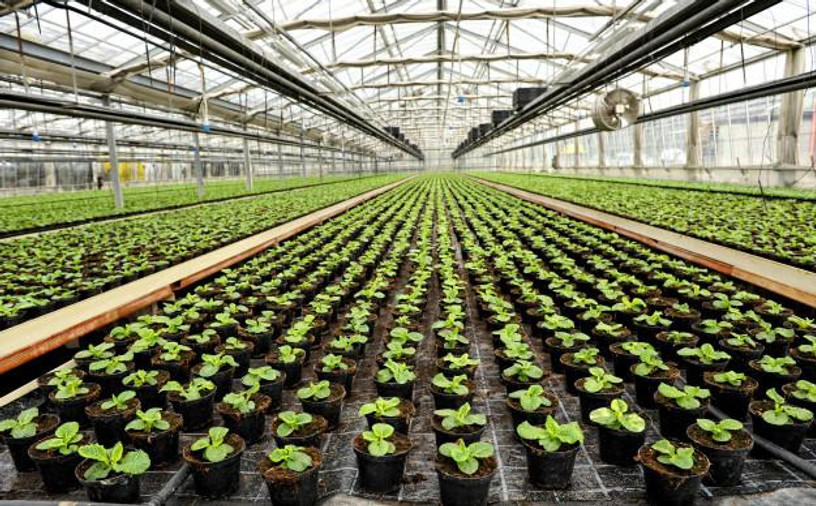Greenhouse Growing Basics: Greenhouse Heating Systems
Sep 3, 2021
Temperature swings are often one of the biggest challenges in greenhouse growing. The external climate can become too demanding, thus greenhouses might require additional heating. In areas with especially harsh winters, a heating system is necessary to keep greenhouses warm enough for plant growth.
In this blog post, we share tips and information to help you keep your greenhouse warm during winter.
Check Your Greenhouse for Air Leaks
If your greenhouse is struggling to maintain a stable temperature during cooler months, first inspect the structure. Even the most well-built greenhouse won’t be airtight.
Inspect Ventilation & Fans
Ventilation becomes especially important during the summer when a greenhouse can become too hot. However, ventilation, in the form of ridges, shuttered vents, and fans, can allow warm air to “leak” out of the greenhouse during colder months.
Start by ensuring ventilation is properly winterized:
●Fans should be covered and vents firmly sealed.
●Ridge vents, which allow rising hot air to escape, should be sealed.
●If shutters or vents will no longer fully close, it’s time to replace them.
After you’ve inspected ventilation, if your greenhouse is still too cold, the next step may be adding insulation.
Add Insulation To Your Greenhouse
Bubble wrap is a go-to insulation for greenhouses. Applying bubble wrap to clear glass greenhouse walls will help to minimize heat loss. It’s a low-cost and readily available option, with many gardening specialty stores offering bubble wrap designed specifically for insulating greenhouses.
Heating Your Greenhouse During Winter
If your greenhouse is properly weatherized but still too cold, the next step is to invest in a heating system. There are many options available, and the right one will depend on the design of your greenhouse, your budget, and the plants you are growing.
When identifying the best heating option for your greenhouse there are two categories to consider: active and passive heating. Both options can be used independently or in combination to heat your greenhouse.
Active Heating Options
Active heating refers to any system that is powered to create a source of warmth. Electric heaters are one of the most common types of active heating.
Electric Heaters
Electric greenhouse heating systems include:
●Radiant hot water heating
Each electric option has its own benefits. Space heaters are excellent for heating an open area, like an entire small greenhouse. Meanwhile, greenhouse heat lamps and radiant tube heaters are better suited for directional heating - they allow heat to be applied on to a specific area, if necessary.
Electric heaters can be powered via solar panels if needed. However, electric options aren’t ideal for every greenhouse. In those cases, gas heaters are an alternative.
Gas Heaters
In areas without access to electricity, gas is the go-to option for heating. Portable gas heaters offer many of the same benefits of electric space heaters, but with added flexibility.
Smaller portable heaters are often enough for a small home greenhouse. For larger home and commercial greenhouses, dedicated forced air heating systems are available. Forced air heaters can be controlled with a thermostat and will deliver warm air evenly throughout the entire greenhouse.
Forced air options have the added benefit of increasing airflow within the greenhouse, and can be further coupled with fans if necessary. Maintaining airflow is important for preventing mold and mildew growth, which can become a concern depending on moisture levels.
Passive Heating Options
While active heating systems are common, there are a lot of ways to heat a greenhouse without electricity or gas. Growers have used passive heating for centuries, and it may be preferable for smaller home greenhouses or for those on a limited budget.
Natural Heat Sinks
Certain materials naturally act as heat sinks, absorbing energy from the sun’s rays and gradually releasing it over an extended period. Greenhouses can take advantage of this effect to provide stable heating in late afternoon and night.
Examples of heat sinks include concrete and water. Adding a concrete floor to your greenhouse can help it trap additional heat. In addition, plastic containers can be painted black and filled with water. The water inside of the containers will absorb heat and release it as the temperature falls.
Composting For Heat
Decomposing material produces a substantial amount of heat. In smaller greenhouses, compost trenches or bins can be used to generate additional heat. For larger greenhouses, efficient use of compost heat requires a little extra work.
Heating a larger greenhouse with compost requires two steps: heat storage and heat utilization. Currently, there are several methods of storage and utilization. Which methods used will depend upon the needs of your greenhouse and the surrounding space that is available.
Greenhouse Positioning
Finally, consider the positioning of your greenhouse. For smaller greenhouses, re-positioning may still be a viable option.
In the northern hemisphere, the winter sun is always in the southern part of the sky. So, be sure the south facing side of your greenhouse is in direct sunlight.
Find The Right Greenhouse Heating System From Farmer Boy
Farmer Boy has over 30 years of experience serving the needs of the agricultural industry. We understand the needs of farmers and growers, so we offer quality solutions from trusted brands.
Whether you’re a first-time greenhouse operator or an experienced grower, we have the tools and equipment you need to keep your greenhouse running smoothly.
Shop our full selection of agricultural and greenhouse heating equipment. Need assistance with a custom greenhouse heating system? Our sales team can help answer product questions and find what you need! Give them a call today at 1-800-845-3374.


